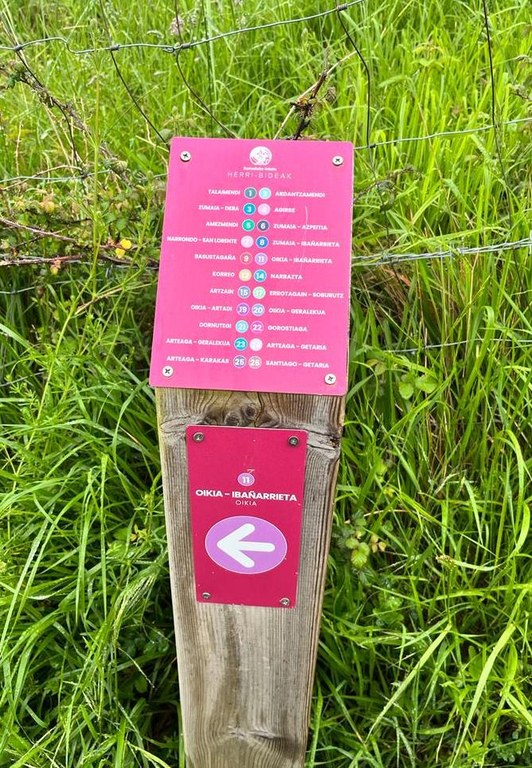Traversing Zumaia on Public Pathways
Do you remember those local paths that used to run between neighborhoods and towns? You've probably heard your parents reminisce about the walks they had to take to reach other villages, neighborhoods or nearby towns. Did you know that they were also "mortuary paths," or the only routes by which one could take the deceased to churches?
Zumaia is full of these public trails, once used extensively by locals. The advent of vehicles led to a decline in their usage, such that, over the years, they have been disappearing.
But this is not the case in Zumaia, which has acted to reclaim these neighborhood paths and their legacy!
Recovering old customs and remembering our history is something that we are passionate about in Zumaia, especially when this means offering new routes and opportunities to explore the town and its environs. Thus, these pathways have been reconditioned and the necessary signage has been installed to orient the walkers who take them. But that's not all: a map has been published clarifying the routes in order to help users plan their walks on them.
One of the places where these paths take us is the Narrondo neighborhood. At first glance, it might seem like a suburban neighborhood devoid of much interest, but Narrondo boasts a great industrial tradition that few people know about. The banks of the river of the same name were ideal for hydraulic facilities like mills and ironworks. In fact, in 1344 it already boasted a mill, and in 1535 it had two ironworks, along with a port and a market, circumstances favoring the dawn of industrialization in Zumaia.
All this history is still visible in Narrondo, as the walls and the chimney of the La Zumayana cement factory have been preserved, while only a part of the chimney and the main nave remain of the San José one. This is why the ZIIZ Association (Zumaiako Industria-ondarearen Informazio Zentroa) is working to protect these remnants, thereby guaranteeing the preservation of a heritage of great interest.
Another point of interest that you can visit, thanks to these public pathways, is the Artadi (holm oak forest, in Basque) area. In addition to offering one of the finest panoramic views of Zumaia, it is made up, for the most part, as its name suggests, of an oak grove of great natural value that closes the path of the Urola River on its right bank; this is a continuous and closed mass of holm oaks, covering just over 20 hectares, resting on a steep hillside. Its location, the thickness of the forest, and the scant human presence give it a special ecological and scenic charm.
The extensive network of public paths in Zumaia also links with routes in other towns, allowing one to easily reach nearby ones like Deba, Zarautz, Getaria and Aizarnazabal.
You can find more information via this link.

 turismoa@zumaia.eus
turismoa@zumaia.eus
 Bulegoa
Bulegoa











